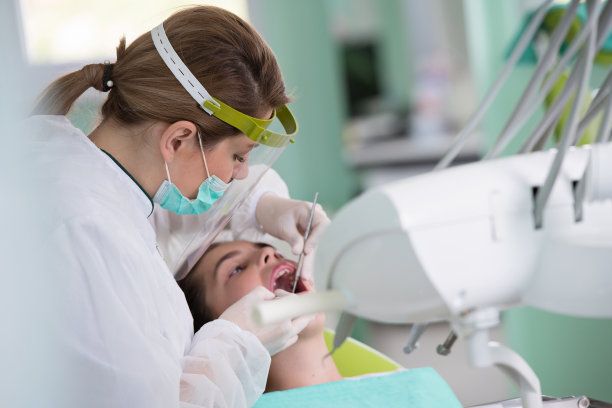The Journey of Extracting a Tooth Understanding the Process and Aftercare for Optimal Healing and Comfort
Summary: Extracting a tooth is a significant dental procedure that can evoke both anxiety and relief for patients. This article aims to demystify the journey of tooth extraction, outlining the essential stages of the process, from the initial consultation to the procedure itself. Furthermore, it delves into the crucial aftercare practices that can aid in optimal healing, minimize discomfort, and ensure a smooth recovery. By understanding each phase of tooth extraction and the necessary aftercare, patients can feel empowered and informed, leading to a more comfortable and effective healing experience. This comprehensive guide serves as a resource for anyone facing the prospect of a tooth extraction.
1. Understanding the Tooth Extraction Process

The journey of a tooth extraction begins with an initial consultation. During this appointment, the dentist evaluates the tooth and discusses the reasons for extraction, which may include severe decay, infection, or overcrowding. The dentist will also take X-rays to assess the tooth’s condition and its relationship to surrounding structures. This assessment is critical in formulating an appropriate treatment plan that suits the patients specific needs.
After the evaluation, the dentist will explain the extraction procedure, which typically involves local anesthesia to numb the area around the tooth. Patients may also have the option of sedation to help ease anxiety. Understanding the procedure helps alleviate fears and prepares patients for what to expect on the day of the extraction.
On the day of the procedure, the dentist will begin by administering the anesthesia, ensuring the patient is comfortable and pain-free. Once the area is numb, the dentist will carefully loosen the tooth using specialized instruments before extracting it. This process, although seemingly intimidating, is generally quick and efficient. Communication between the patient and the dentist is key during this phase, allowing patients to express any discomfort or concerns.
2. What to Expect During the Tooth Extraction
The extraction process can vary depending on whether the tooth is impacted or fully erupted. For erupted teeth, the dentist often uses forceps to grasp the tooth firmly and remove it with a steady motion. However, for impacted teeth that are not visible above the gum line, a more complex procedure involving bone removal may be necessary. This distinction emphasizes the importance of a thorough pre-operative assessment.
Patients should also be aware of the potential for noise and pressure during the extraction. While anesthesia eliminates pain, feeling pressure is normal and does not indicate complications. Dentists often provide reassuring support throughout the process, keeping patients informed of each step, which can help alleviate anxiety.
Once the tooth is extracted, the dentist will place gauze at the extraction site to control bleeding. Patients should be instructed on how to bite down on the gauze effectively. The dentist may also provide additional recommendations for managing discomfort and swelling post-extraction, ensuring patients leave with clear guidelines for their recovery.
3. Essential Aftercare for Recovery
After the extraction, proper aftercare is crucial for healing and comfort. Patients should adhere to the dentists instructions regarding rest, activity level, and diet. It’s often advisable to take the day off to recover, as this allows the body to begin the healing process without added stress.
Managing pain and swelling is an integral part of aftercare. Dentists typically recommend over-the-counter pain relievers or prescribed medication to control discomfort. Additionally, using cold compresses on the outside of the cheek can be effective in reducing swelling during the first 24 hours.
Patients should also be mindful of their diet after extraction. Soft foods are recommended initially, avoiding crunchy, spicy, or hot foods that could irritate the extraction site. Staying hydrated is critical, but patients should avoid using straws, as the suction can dislodge the blood clot essential for healing.
4. Signs of Complications and When to Seek Help
While most recovery processes proceed smoothly, it’s important for patients to be vigilant for any signs of complications. Increased swelling after the first 48 hours, persistent bleeding, or severe pain that worsens instead of improving may indicate issues that require professional attention.
Another common complication is dry socket, which occurs when the blood clot at the extraction site becomes dislodged. Symptoms of dry socket include severe pain and an empty-looking socket. Patients experiencing these symptoms should contact their dentist immediately for assessment and treatment.
Lastly, understanding when to seek help can alleviate anxiety post-extraction. Dentists are always available for follow-up questions and concerns, and it’s vital for patients to remember that seeking assistance is perfectly normal and encouraged if anything feels off during their recovery.
Summary: Extracting a tooth is a journey filled with various stages, from understanding the process to effective aftercare. Every aspect, including preparation, the procedure itself, and post-operative care, is designed to facilitate a smooth recovery for patients. Awareness of potential complications also empowers individuals to seek help when necessary, ensuring the best possible outcomes. By being informed and prepared, patients can navigate their tooth extraction journey with confidence and comfort.
This article is compiled by Vickong Dental and the content is for reference only.


